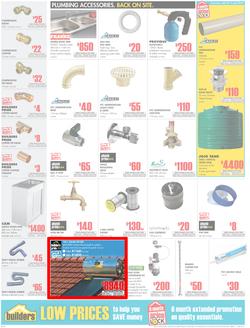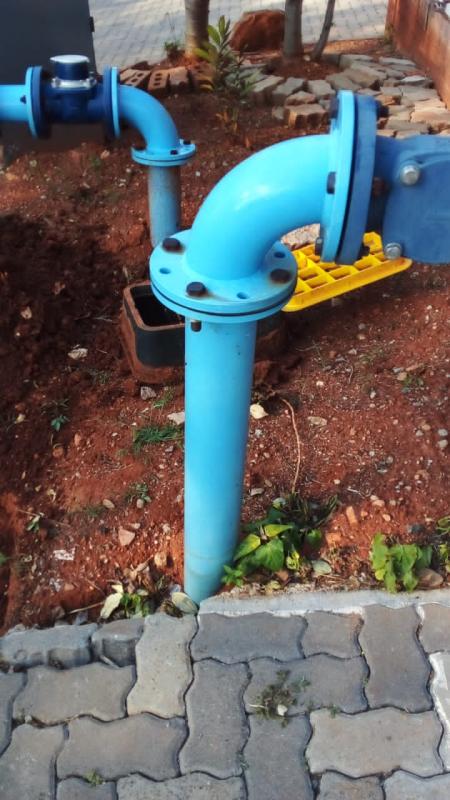Most modern geysers benefit from a good insulation. However, you can still improve your geyser’s energy efficiency by installing a geyser blanket and insulating your pipes.
- Builders Pride Geyser Installation Service
- Builders Pride Geyser Installation Kit
- Builders Pride Geyser Installation Manual

Why insulating / not insulating your geyser and pipes?
- For geyser timers, blankets, pumps, valves, pipes and small, portable or industrial boilers that provide maximum efficiency contact Sustainable.co.za and enjoy the advantages of a more energy efficient home. Our prices are affordable and, as South Africa’s premier eco-store, our knowledge of all types of efficient geyser systems beyond reproach.
- Jun 25, 2020 Learn more about the parts, safety, cost, and more for geyser repairs or installation below. A Guide to Geyser Installation. When it comes to repairing or installing a geyser, it is best to leave it to a professional. If you are brave enough to tackle minor repairs or are qualified enough for geyser installation, this guide will help.
About Builder's Pride: Builder's Pride brings the beauty of a solid prefinished hardwood floor to your home. Beautiful flooring, easy to install, and with a 30-year warranty, these floors will amaze you for years. What is Natural Grade? Natural Grade has some color variation, mineral coloring, and small knots.
Insulating your geyser and pipes will allow you to reduce the heat loss and make your water system more efficient.
Most modern heaters already have a good insulation as they comply with the SANS 10400-XA regulation and with other international norms when they are imported. Insulating your geyser and pipes on this type of geyser will allow you to save at least 300 kWh/year depending on the current efficiency of your system (a standard geyser loses about 400 to 500 kWh/year in heat loss and you can expect to drop this number to 90 kWh/year with a good insulation. Source : Saskatchewan Research Council). If the geyser is old, the saving can be more important. This represents a saving of about R200 per year if we only take into account the efficiency of your water system. A geyser blanket cost about R200, so you just need 1 year to pay back your installation.
However, you must also note that this heat loss might participate to heating your home, especially if your geyser is located in a living area such as the kitchen or bathroom. In some countries, the pipes and geyser locations are usually designed to serve this purpose, especially in winter time. In South Africa, this is hardly the case, and your geyser is more likely to drain your electricity consumption to warm up your garage rather than your bedroom. This potential benefit can also be an inconvenient in summer time when the main challenge is too cool down your home efficiently. For this reason, you might still want to insulate your geyser even if it is located inside your house. Just take this into account when making a decision to insulate or not your geyser and pipes.
How to choose the right blanket and pipe insulation?

For the geyser blanket, you must look at the R-value that is an indicator of thermal resistance (it represents the ability of a material to resist the transfer of heat). The minimum value required by the legislation is 1.00 but the higher the value, the better. The R-value depends mostly of the type of material used, so don’t buy the thickest blanket you can find without looking further at its thermal properties. Good geyser blankets usually have a R-value of 1.25 or more.
For the pipes, you can find 2 insulation methods. The first method consists in using the same material than the geyser blanket. If you go for this method, make sure that you buy a blanket that is much bigger than your geyser to secure some unused scraps. The second method consist in using pre-formed pipe sections that can be snapped over the pipes. You can buy these pipe sections separately or buy an insulation pack that includes the blanket and the pipe sections.
You have a large choice of distributors for this type of equipment. Here are some places you can look at:
Builders Pride Geyser Installation Service
- etc.
How to install you geyser blanket and pipe insulation?
When you purchase a geyser blanket and pipe insulation, check with your supplier if they provide the installation. A lot of them do. Otherwise, you can do the installation yourself, it’s not that complicated. Here is a video from Eskom explaining how to install your blanket and pipe snaps:
(Picture: http://pinterest.com/pin/421719952583051316/ )
Geyser installations are often incorrect

An incorrectly installed hot water heater is the most common defect discovered by HouseCheck inspectors in South African homes. These defects can be very dangerous and clearly result when untrained, or un-supervised workers are left alone in the roof cavity to do the geyser installation.
Most new geyser installations are typically high pressure (400-600kpa) system – by far the most common type in South Africa. Vertical geysers are different although much of the description still applies. Low-pressure systems (100kpa) are significantly different but are fairly uncommon now.
Components of a hot water heating system

Drip Tray: The geyser sits in a tray made of plastic or steel. Since June 2001, the drip tray is not optional. The tray must be fitted with a 40mm PVC waste pipe that drains the tray by piping the water out of the house.
Vacuum breakers: These are small brass components mounted at the 30cm length of pipe. They two vacuum breakers stand vertically about 30cm above the geyser. These are important. They prevent the water siphoning out the geyser when the cold supply is stopped.
Shut off valve on the cold water side: The cold water side is the side that directly connects to the drain cock.
Temperature and pressure safety valve (T&P Valve): Mounted on the geyser towards often on the opposite side to the drain cock. This is a vital component. This valve should have a 20 mm metal (copper or steel) pipe connected to it and the pipe must lead directly out the building. This vent an important safety feature of the whole system. It must be made of copper or steel – not plastic. The pressure rating valve must match the pressure rating on the geyser.
Multi-valve (pressure control valve): This is a water pressure control valve fitted to the cold water supply to the geyser. The purpose of the pressure control valve is to “balance” the water pressure of the hot and cold water supply to baths, showers, and basins. For a balanced system the cold water supply to baths, basins, showers etc must be taken off the supply between the pressure control valve and the geyser. The pressure control valve reduces the cold water pressure to the same pressure of the hot water coming from the geyser. Sometimes plumbers will locate the pressure control valve outside of the house – where the cold water supply enters the house. This is fine. Mostly however the multi-valve will be found in close proximity to the geyser. The pressure control of the multi-valve is designed to release excess pressure and may, therefore, drip when water is drawn through the valve. Each geyser must also be fitted with a pressure control valve. As most geysers have a maximum working pressure it is vital that the pressure is controlled in order for the geyser to have a longer life span. If no pressure control valve has been fitted then the geyser guarantee will likely not be honored.

Note: If the multi-valve is located inside the roof cavity, then a 13mm overflow pipe extending to the outside of the house, must be fitted to the multi-valve.
Electrical isolator switch: Should be within 1m of the geyser. This was not a requirement on old geysers. The geyser also has to be earthed.There should be a cover over the thermostat and element. These are often just left lying next to the geyser.
Thermostat: Regulates the water pressure inside the geyser. A good temperature for household use is 60oC.
Self-sacrificing anode: Anode rods that come installed with geysers are generally are made of magnesium or aluminium that is wrapped around a steel core wire. Water heater anode rods are screwed into the tank. Because the rod is made with a higher current potential than other metals in the water heater, it will ensure that the galvanic current flows from the rod to other exposed metals, preventing their corrosion. In other words, the anode rod corrodes and not the tank or the element. The anode rod is “self-sacrificing.” When there’s no sacrificial metal left on the anode, the tank can rust out. Anode rods generally last about five years but this depends on the quality of the water and how much water travels through the geyser. Not replacing a depleted anode rod will shorten the life span of the geyser.
Builders Pride Geyser Installation Kit
Plumbing piping: The geyser may be fed with polycop (plastic) pipe – up to the shut-off valve, but the pipe into and out of the geyser must be copper or galvanised steel. The PCV and T&P vent pipes also have to be steel or copper, especially the T&P vent. The hot water should be carried in copper, steel or suitably rated (70 degrees) plastic or metal-sheathed composite pipe.
Builders Pride Geyser Installation Manual
Correct geyser installation image – courtesy Kwikot